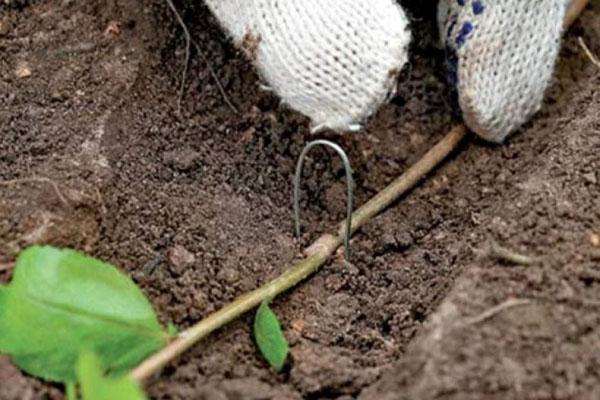Viburnum propagation by layering: an easy way of success
 When a plant is tasty, and even more useful, then, of course, you want to have several dozen of its copies in the garden. Therefore, propagation of viburnum by layering is a simple and not laborious way for such a case. It is still important to know some of the subtleties of the process. In other cases, the bush is simply divided into several parts, leaving three buds on each of them.
When a plant is tasty, and even more useful, then, of course, you want to have several dozen of its copies in the garden. Therefore, propagation of viburnum by layering is a simple and not laborious way for such a case. It is still important to know some of the subtleties of the process. In other cases, the bush is simply divided into several parts, leaving three buds on each of them.
Also in July / June, 10cm green cuttings (with 3 nodes) are cut and rooted. The foliage is removed from the stems, and then immersed 2 cm in a substrate of peat and sand. Next, they make a small greenhouse, and the next spring they are planted in the soil.
Viburnum propagation by layering - all the subtleties of work
It seems to many that this procedure is quite simple. You just need to take the branch away from the mother bush and dig it in. Nevertheless, in order to get a healthy seedling, and in the future a productive plant, the process is carried out with some reservations:
- A young and properly growing shoot is chosen. It should be as flexible as possible, not too stiff.
- Pruning is done. Two buds are left from the branch point. All other processes are removed on the stem.
- They loosen the ground near the bush. A small depression is formed at 20 cm.
- Press the branch to the bottom of the hole. Fix it with a paper clip / loop, which can be made from a welding electrode. It is recommended to break the branch at the point of contact with the soil.
- Close up with wet soil.
- They put oppression on the breast. The plastic plate is installed close to the stem, but so that it does not scratch it. A stone is placed on top.
- After a week, watered abundantly.
Viburnum is propagated by layering in early spring, after the threat of spring frosts has passed. In some regions, the unusual planting date falls on the May holidays or mid-April.
The next spring, the seedling is dug up. In the fall, when new shoots appear, the rooted sprout is separated from the mother bush.
Lazy Layers
Kalina is unpretentious both in care and in reproduction. It perfectly adapts to new conditions and quickly takes root on sod-podzolic soils. Therefore, some experienced gardeners use "lazy" layering for its propagation. First of all, they:
- choose an extreme young branch;
- cut off its top, leaving 2-3 cm above the kidney;
- stick the shoot into the ground with a cut;
- fix it with some object.
After 12 months, new branches hatch from such an unusual sprout, and roots are also formed on it. The resulting seedling is cut from the parent culture. Then they dig up a young specimen with a lump of earth and send it to a container. Sprinkle the roots with earth so that they do not become weathered. As soon as it gets warmer, the sprout is transplanted to a well-lit area. Some place it a few meters from fruit trees.
It should be borne in mind that reproduction of viburnum by layering according to such a system will not give lightning-fast results. For a long time, the seedling will sit in the ground until it is sufficiently strong. Nevertheless, by planting several such exhibits, you can get a bountiful harvest in 5 years.